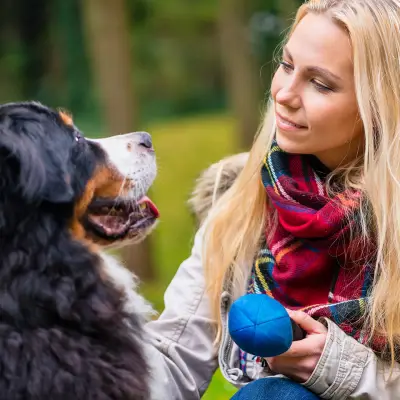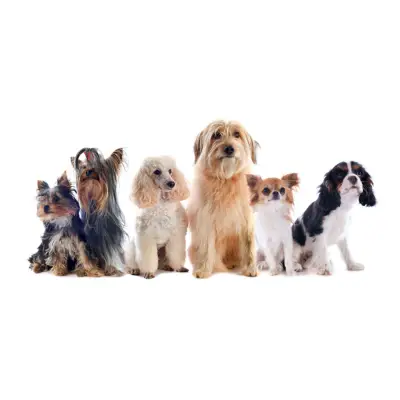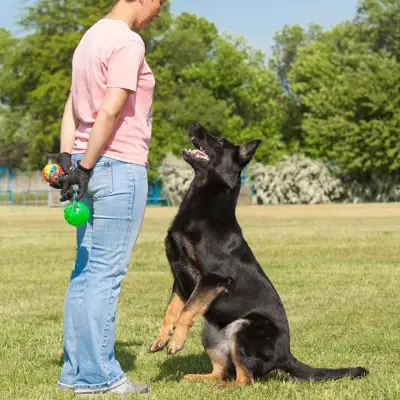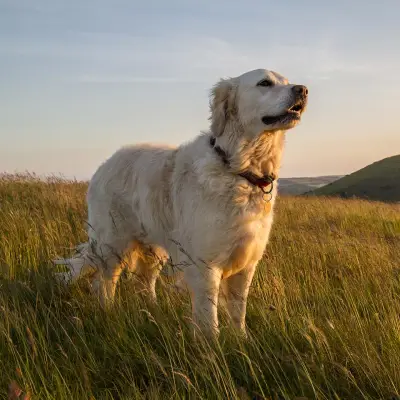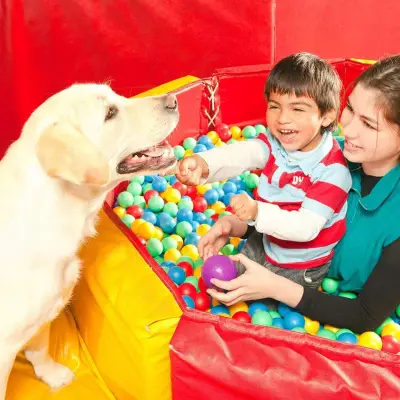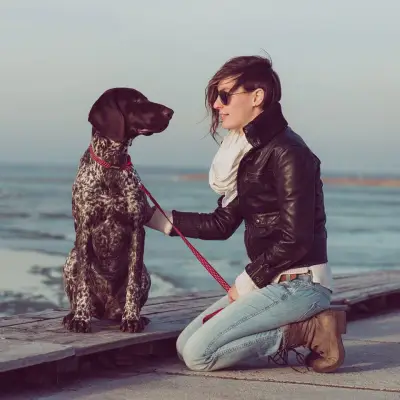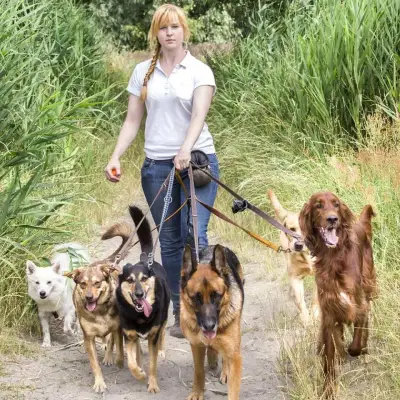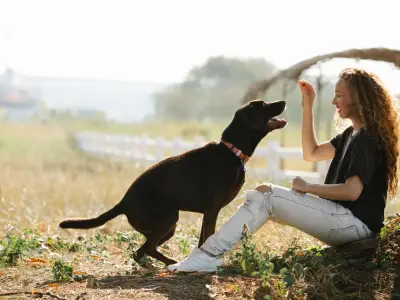If you’ve recently welcomed a furry friend into your home, or you’re looking to deepen the bond you already share, you may have come across the concept of positive reward training for dogs. It’s a method often recommended by professionals, praised by dog lovers, and backed by behavioural science.
In this guide, you’ll learn everything you need to know about positive reinforcement training, including simple methods you can put into practice today.
Jump to:
- What is Positive Reward Training for Dogs?
- What is an Example of Positive Dog Training?
- The Science Behind Positive Reinforcement
- How Is Negative Reinforcement Different?
- Useful Tools for Positive Reward Training
- 5 Positive Reward Training Methods
- Common Mistakes to Avoid in Reward Dog Training
- How to Positively Discipline a Puppy
- Building Lasting Good Behaviour
- Frequently Asked Questions
- Study Our Dog Training Diploma for £29
Recommended for you!
Best SellersWhat is Positive Reward Training for Dogs?
Positive reward training (also called positive reinforcement training) is a dog training method that focuses on rewarding desirable behaviour instead of punishing unwanted behaviour. The basic principle is this: when a dog does something you like, you immediately follow it with something the dog likes, usually a treat, toy, or praise.
This method works because dogs naturally repeat behaviours that lead to positive outcomes. Over time, they learn to associate those behaviours with good things, making training enjoyable and effective.
What is an Example of Positive Dog Training?
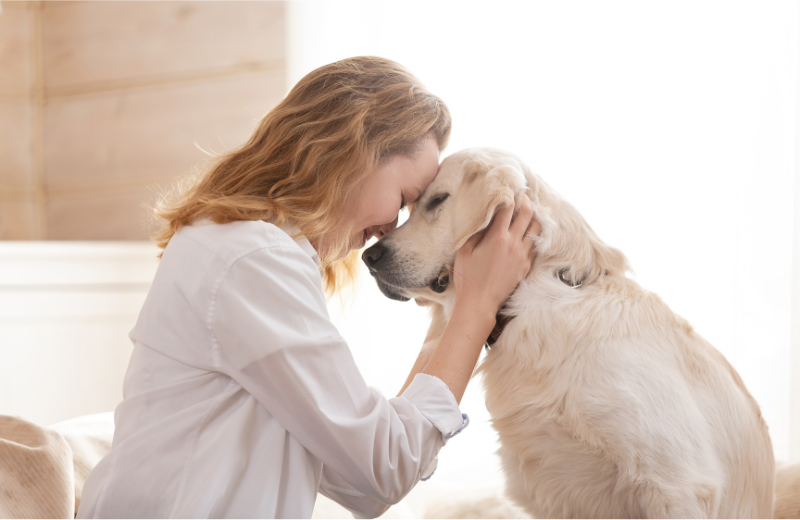
Imagine your dog sits when you ask, and you immediately give them a tasty treat and say “Good dog!” That’s positive reinforcement. You’re marking the moment of good behaviour and reinforcing it with something your dog values.
This is different from using punishment or dominance-based techniques, which can create fear or confusion. Instead, positive reward training builds trust, encourages learning, and strengthens your relationship.
The Science Behind Positive Reinforcement
Research shows that positive reinforcement training for puppies and adult dogs leads to better learning outcomes and fewer behavioural issues than punishment-based methods.
Dogs trained using rewards tend to be more confident, responsive, and emotionally secure. This is because reward-based training works with their natural instincts and encourages them to make good choices on their own. Rather than being afraid of getting it wrong, your dog becomes motivated to get it right.
How Is Negative Reinforcement Different?
To understand positive reward training, it helps to contrast it with negative reinforcement. This doesn’t mean punishment; it refers to removing something unpleasant to encourage behaviour.
For example, if a dog pulls on the lead and feels pressure from the collar, they might learn that walking beside you stops that pressure. So they stay close, not because they understand it’s the right behaviour, but because it helps them avoid the discomfort.
While this method can sometimes result in behaviour change, it often relies on creating a mildly stressful or confusing experience for the dog. As a result, it may not build the same level of trust or confidence that reward-based training offers.
Useful Tools for Positive Reward Training
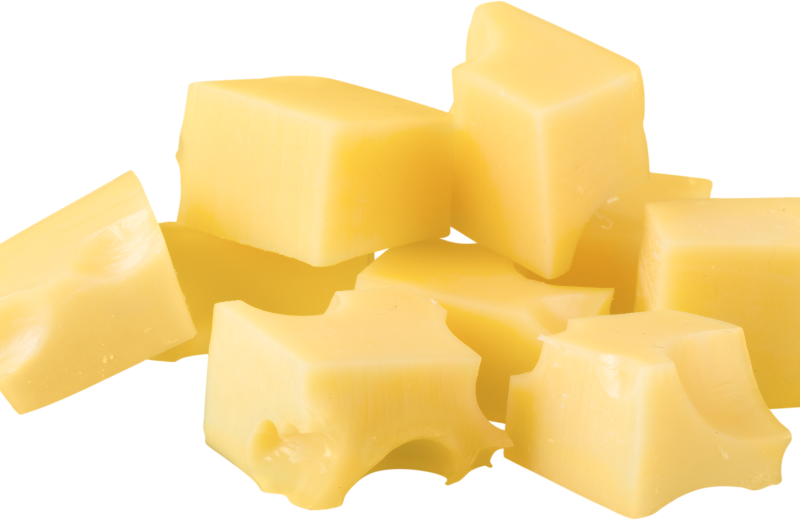
You don’t need fancy gear to start positive/reward training for dogs, but having a few basics can make it easier and more enjoyable:
- High-value treats: These are especially tasty rewards your dog loves. Try tiny pieces of chicken, cheese, or liver treats.
- Clicker or marker word: A clicker or a consistent word like “Yes!” helps signal to your dog that they’ve done the right thing.
- Treat pouch: For easy access to rewards during walks or sessions.
- Short, regular training sessions: Keep things fun and manageable, 5-10 minutes is often ideal.
Is it Better to Train Dogs with Treats or Praise?
Treats tend to be more motivating during training than praise alone, especially during the early stages of learning. Once your dog understands a command, you can gradually reduce treat use and rely more on praise or affection.
Many trainers use a mix: high-value food rewards for new skills and verbal praise for everyday good behaviour. The goal is to build habits your dog enjoys and understands.
5 Positive Reward Training Methods
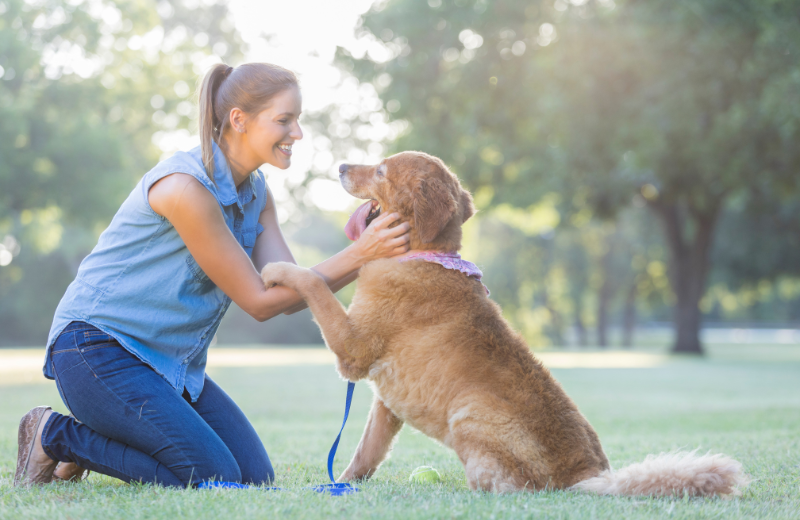
There are several simple yet effective ways to put positive reward training into practice. Let’s look at a few examples you can try right away:
1. The Click and Treat Method
Use a clicker or say “Yes!” as soon as your dog does something right. Immediately follow it with a treat. This method helps mark the exact behaviour you’re rewarding, making it clearer for your dog.
2. Lure and Reward
Use a treat to guide your dog into a desired position, like sitting or lying down. Once they do it, reward them. Over time, add a verbal cue like “Sit.”
3. Shaping
Break complex behaviours into small steps and reward each successful stage. For example, to teach “roll over”, reward the dog first for lying down, then turning slightly, and so on.
4. Capturing
Wait for your dog to offer a behaviour naturally (like sitting calmly), then mark and reward it. This helps your dog learn what behaviours earn rewards, even when not prompted.
5. Verbal Praise and Affection
Use a cheerful, encouraging tone. Simple phrases like “Good girl!” or “Well done!” work well, especially when paired with a pat or stroke.
Common Mistakes to Avoid in Reward Dog Training
Even the most well-intentioned trainer can make a few stumbles. Here are things to watch out for:
- Rewarding too late: Timing is everything. Always reward within 1-2 seconds of the behaviour.
- Rewarding unwanted behaviour: Don’t accidentally reinforce jumping, barking, or pulling by giving attention or treats.
- Training when your dog is distracted or tired: Set your dog up for success with short, focused sessions in a quiet environment.
How to Positively Discipline a Puppy
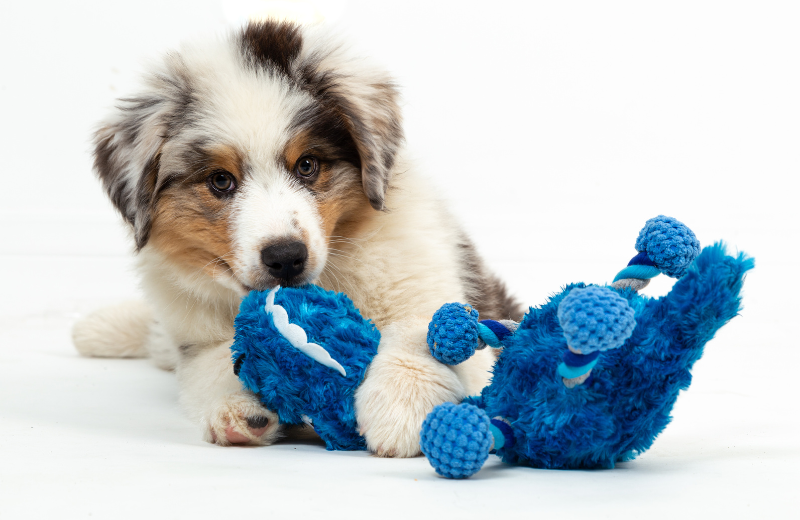
Training puppies is a little different to training adult dogs because they’re still learning how the world works and need extra patience and guidance. Consistency, supervision, and gentle redirection go a long way. When your puppy misbehaves, the goal is to teach better choices. Here’s how:
- Redirect unwanted behaviour to something appropriate (e.g., chew toy instead of furniture).
- Ignore mild attention-seeking behaviours like whining (if their needs are met).
- Reward calmness and good choices consistently.
- Be patient, puppies are still learning how the world works.
Building Lasting Good Behaviour
The beauty of positive training for dogs is that it builds life skills and encourages confidence. Here are behaviours that benefit from regular reinforcement:
- Walking calmly on the lead
- Coming when called
- Settling quietly at home
- Ignoring distractions
- Waiting patiently at doors or before meals
Reinforce these consistently with praise, treats, or toys, and you’ll soon see long-term improvements in your dog’s behaviour and wellbeing.
Recommended for you!
Best SellersFrequently Asked Questions
How long does it take to see results with positive reward training?
It depends on your dog’s age, personality, and previous experiences, but many dogs start responding to training within a few sessions. Consistency and patience are key. Some behaviours may be learned in days, while others, like recall or loose lead walking, may take weeks or longer.
Can you use positive reward training with rescue dogs?
Many rescue dogs may be anxious or unsure, especially if they’ve had negative experiences in the past. Positive reinforcement helps rebuild confidence and creates a safe space for learning without fear or confusion.
What if my dog isn’t food motivated?
Not all dogs respond to treats in the same way, but most have some reward they find exciting. You can try small pieces of cooked chicken, soft cheese, or even a favourite toy. Some dogs respond well to play, verbal praise, or affection. The key is finding what your dog values and using that to reward good behaviour.
Should I always use treats, or will my dog become dependent on them?
Once your dog understands what’s being asked, you can gradually reduce how often you give food rewards. Keep your dog motivated with verbal praise, occasional treats, or fun games, so they don’t come to expect a snack every time.
Can positive reward training be used for problem behaviours?
Positive training can help manage behaviours like jumping up, barking, or pulling on the lead by teaching and rewarding alternative actions instead. For more complex issues like aggression or fear-based behaviours, it’s best to consult a positive reinforcement dog trainer or behaviourist for guidance.
Is positive training effective for large or strong breeds?
Positive reward training works for dogs of all breeds and sizes. In fact, it’s particularly important for large or powerful dogs, as it teaches them self-control and cooperation without relying on force or confrontation. With the right motivation and consistency, any dog can learn through positive methods.
What if my dog gets too excited during training?
It’s common for dogs to get overexcited, especially if treats or toys are involved. Try using lower-value treats, shortening the session, or training after exercise when your dog is calmer. Keep sessions short and focused; just a few minutes at a time can be more effective than long stretches.
How often should I train my dog?
Daily training, even in short bursts of 5-10 minutes, works best. You can also build training into everyday activities, ask for a sit before meals, or reward calm behaviour while watching TV. These little moments help reinforce good habits throughout the day.
Study Our Dog Training Diploma for £29
If you're ready to deepen your understanding and become a confident, knowledgeable trainer, consider taking the Dog Training Diploma Course with Centre of Excellence. Whether you're a dog owner, aspiring trainer, or simply passionate about canine behaviour, this course offers comprehensive guidance suitable for all levels. And right now, you can enrol for just £29.

